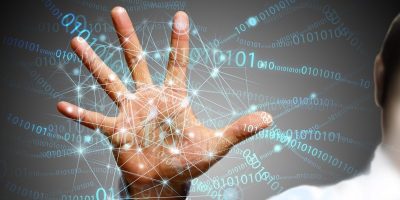Using the multimodal method, outer conditions can be seen and perceived as Artificial Intelligence affects the way people live. Billions of petabytes of data consistently pass through AI devices. Nonetheless, the vast majority of these AI devices are operating independently of each other at this time. However, in the coming years, as the amount of data flowing through these gadgets increases, technology organizations and implementers should find a way for both of them to understand, think, and work together to fully harness the potential that AI can offer.
An interesting study by ABI Research predicts that while the overall installed base of AI devices is expected to grow from 2.69 billion in 2019 to 4.47 billion in 2024, not all of them will be temporarily interoperable. They will work individually and heterogeneously to sort out the information they are fed, instead of consolidating the gigabytes into petabytes of data flowing through them into a single AI model or system.
The ability to use multiple sensory modalities to encode and decode external environments is ultimately derived from the Latin words’ multus ‘which means multiple and’ modals ‘which implies mode, multimodality, concerning human perception. They build a united, special view of the world at the moment when they are joined. The multimodal experience grows above the innovation universe. When specifically applied to Artificial Intelligence, it is known as Multimodal Learning to join various AI knowledge sources into one model.
Multimodal structures, unlike traditional unimodal learning constructs, may communicate correlative data about each other, which can become obvious as both are involved in the learning cycle. In this way, learning-based approaches are ideal for making more robust inferences or even new insights that consolidate signals from different modalities, which would be inconceivable in a unimodal system.
More effective predictions can be made by multiple sensors analyzing the same data, as identifying changes in it might be possible when the two modalities are available. Secondly, the combination of multiple sensors may facilitate the collection of additional data or patterns that may not be captured by individual modalities.
Multimodal learning is presented in the automotive space for real-time inference and forecast with Advanced Driver Assistance Systems (ADAS), In-Vehicle Human Machine Interface (HMI) associates, and Driver Monitoring Systems (DMS). To extend consumer appeal and provide more noteworthy cooperation between laborers and robots in the industrial space, robotics vendors fuse multimodal systems into robotics HMIs and movement automation. Similarly, as we have proven that human perception is emotional, machines can be assumed to be equal. Using the multimodal approach, AI can see and understand external circumstances in a time when AI changes the way people live and function. This approach simultaneously imitates the human way of dealing with perception, including imperfections, as well.
The benefit is that computers can mimic this human way of coping with the interpretation of external situations, even more directly. Some AI technology, however, can see data up to 150 times faster than a person (in corresponding with a human guard). Only one problem remains, In datasets, multimodal structures have inclinations. The number of questions and ideas involved with tasks such as VQA, as well as the lack of great data, regularly prevent models from finding out how to “reason,” driving them by relying on dataset statistics to make informed guesses.
Follow and connect with us on Facebook, Linkedin & Twitter

